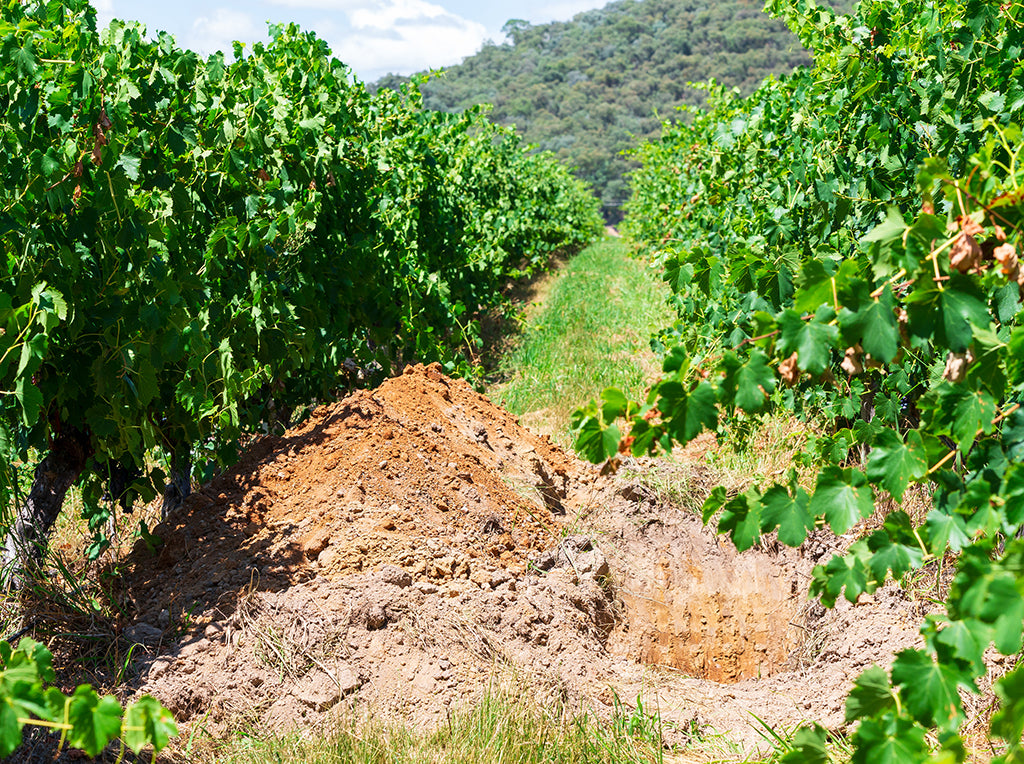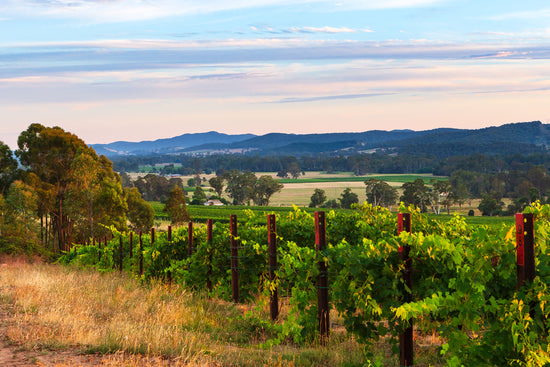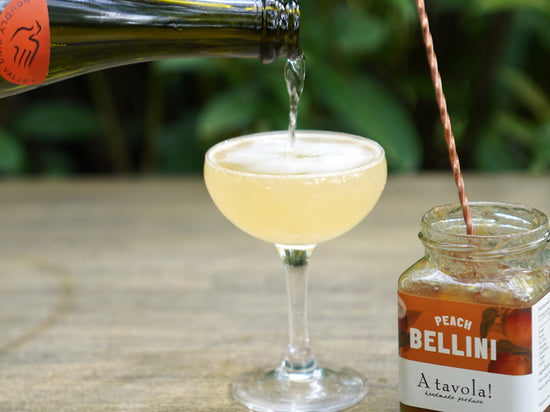The first generation of Pizzinis in Australia established the family business; at that stage in tobacco farming. The second generation oversaw the transition to grape growing, before building the brand and the long-term relationships in the wine industry that helped it flourish. The third generation’s legacy will be a new approach to understanding the land, led by winemaker, Joel Pizzini.
More than twenty years ago the Pizzinis began working with Italian winemaker and consultant Alberto Antonini to develop the profile of their Italian varieties, and improve the quality of their wines. The work started with individual selection of the best vines that were producing consistently high quality grapes year after year. At this stage the approach was based on a visual assessment of the health of the vines, and confirmed by tasting the grapes. Working with these parcel selections evolved into the development of the flagship wines Rubacuori sangiovese and Coronamento nebbiolo. Ongoing work with Alberto inspired Joel to “understand the vineyards from the top to the bottom, so we can produce top quality every vintage.”
Alberto works closely with renowned soil expert, Pedro Parra. As part of the desire to understand the vineyards, the Pizzinis began working with Pedro in 2018. While it is commonly accepted that terroir influences wine styles, Pedro has a belief that different soil types translate into textural sensations in wine. Joel recalls a time when Pedro tasted a barrel sample of nebbiolo and was able to pinpoint the specific part of the vineyard it was from, based on the firmness of the tannins.
The work to understand the Pizzini’s land began with electromagnetic soil profiling of the vineyards. The technology allows for an exploration of the soil up to 1.5 metres below the surface. This process provides a better understanding of the qualities of the soil, which then allows for decisions about vineyard management and the varieties that will thrive in different sites. It also informs the best way to treat the grapes from existing plantings. Even within a single vineyard, there can be a range of soil types, particularly on the slopes, where some of the best grapes are grown.
The result is a detailed map of the way the soil changes throughout the property, filled with bright colours and unusual shapes. Saved to his phone, Joel is constantly referring to the map as we move through the vineyards. What looks like a Gorman print to the outsider, is the key to future grape-growing and winemaking decisions.
Joel points to a jigsaw puzzle-shaped point of the map denoting a sandy/silty soil that tends to become very hard in the dry summer heat. In the grapes this soil emphasises dry, hard tannins. With this knowledge, the team pick the grapes earlier, reduce the length of skin contact to avoid extracting high levels of tannins, and adapt the winemaking to suit the site.
But this mapping was only the beginning. The next step was to dig pits throughout the vineyards and compare this analysis to the maps, to really understand what was happening.
Twenty metres up the row of one of the premium sangiovese vineyards a large pit, two metres long and a metre and a half deep, has been carved next to the vines. As Joel climbs down into the hole, his enthusiasm is contagious. “What’s happening downstairs helps us understand what’s happening upstairs,” he says, as he points out areas of interest. A layer of dense soil towards the surface demonstrates the way mechanisation in the vineyard has impacted the soil. Use of tractors and other mainstream farming practices can lead to compaction. The roots need to work harder to push through the tough soils and it leads to limited root growth and shallow roots, making the vines more susceptible to heat stress. This also leads to increased water requirements – a resource in short supply.
This vineyard is showing some improvement, with roots like fine lace emerging from the soil beneath the compaction. A metre down, Joel crumbles golf-ball sized, chalky rocks between his fingers, explaining that the goal is to get the roots feeding from this depth. As these rocks decompose, the decaying minerals add an elegance and refinement to the wine. Suddenly he crouches down and rubs at the soil with his fingers – he has seen a thick fibrous root snaking between the rocks.
This discovery is the result of years of work in the vineyards to improve the soil quality, the starting point in the gradual transition to sustainable viticulture.
Joel likens vines grown using conventional or “convenient” farming practices to just eating from “the top part of the fridge, the freezer part, where all the processed food is.” The vines don’t access all the nutrients to be found in the rest of the fridge, he says, “you want them eating from the crisper at the bottom.”
To encourage this deep root growth, they employ a number of techniques. Once a year they methodically plough alternate rows in the vineyards using a deep ripper to cut a path for the roots to grow down. Two curved blades fluff and aerate the soil, providing more oxygen to the roots. Timing is important, “We do it straight after harvest because that’s when the vine has a massive explosion of root growth.” When it rains, the water can permeate the furrows instead of just pooling around the surface roots of the vine.
Biodiversity also improves the health of the soil. Cover crops, like peas, can add nutrients to the soil, as well as having deep tap roots that grow vertically down. In summer, as the cover crops die, the roots wither, creating holes that help guide vine roots down deeper into the soil. Deep-rooted vines stay cooler, can access more moisture, are less likely to dehydrate on hot days, and require less water in the form of irrigation.
Moving towards a more organic approach is also about weaning off the “easy” techniques of managing the vineyard. The first step has been to reduce the use of herbicides, as these can build the salt levels up around the roots. When it rains, the salt draws the water closer to the vine and it effectively force feeds the vine full of water. Moving away from chemicals reduces the salinity of the soil and allows the vines to better regulate their own water requirements.
The Pizzini family are developing a composting regime with hay, grape seeds and cow manure, to soften the soil and build up the humus levels. Compost promotes the healthy growth of microorganisms in the soil, like beneficial bacteria and worms. Oxygenating the soil supports these micro-organisms and allows the roots to ‘breathe’. This improves the health of the vine and the quality of the fruit. The grape skins become thicker, and develop more flavour. The vines become self-supporting and better equipped to withstand disease.
“One shoe doesn’t fit every vineyard” Joel explains. The Pizzini’s goals for vineyard health and organic transition have required a big change in the mindset of the vineyard team. They have dug more than 200 pits throughout their property to reach this level of knowledge and understanding, and continue to learn new things. “Organic farming practices require you to be more proactive in the vineyard on a daily basis. It requires you to be more observant and ready to respond quickly. It makes you a better farmer.”
The next step will be to use these “big jumps in knowledge” to continue the quality-focus they have long had in their wines. “We have been identifying the best blocks that produce the best fruit and hand selecting for some time, now we understand why,” Joel says. Instead of harvesting whole vineyards, this deeper understanding of the sites allows small plots destined for premium wines to be managed individually and picked at the optimum time for quality.
A longer term goal will involve replanting. It’s not as simple as matching grape varieties to the best sites, it also involves selecting the best rootstocks. This adds a complexity that is often not well understood. Most grape vines in the world have a European variety (e.g. pinot grigio, sangiovese) grafted onto the roots of an American vine species. This protects the vine from an aphid-like insect, phylloxera; the cause of devastation in vineyards.
Historical decisions led to planting low-vigour (slower growing) rootstock with the aim of producing lower yields and higher quality fruit. However the situation is more nuanced than that. Many of the low-vigour rootstocks are also shallow-rooted, requiring high inputs of water and nutrients to keep the vines alive.
High vigour rootstocks have dense root systems, once they are established they don’t need much water. Planting these on some of the sites with poorer soil will encourage deep root growth and allow for a natural balance to the vigour. It all comes down to taking the time to understand the site and making decisions that will result in the best quality grapes and balance the environmental impacts.
“The ultimate goal is to be able to profile the whole vineyard to identify all the quality batches so then we can focus our energy on those,” Joel says.
Joel’s drive is to help shape the future for the next generation. It’s important to him to “understand what we’ve got to start off with, help to develop new vineyards, understand where our quality blocks are and how they perform in wet and dry years.” It’s also about health of the business, the environment and most importantly, the people – “our workers, our family and the people drinking the wine at the end of the day”.





